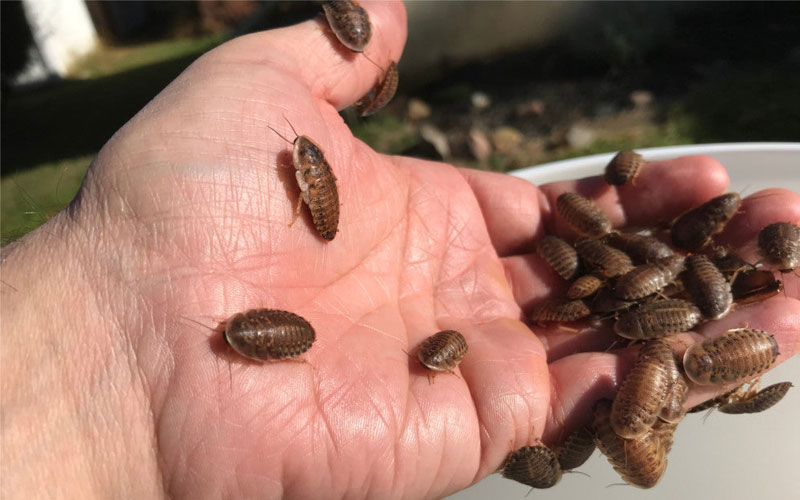Dubia roaches, scientifically known as Blaptica dubia, may not be the most glamorous of creatures, but they play a crucial role in the lives of many reptile enthusiasts. These small insects are valued as feeder insects for various reptiles, including bearded dragons, geckos, and chameleons. However, what many people may need to realize is the fascinating life cycle of these insects. This article delves into the journey of a Dubia roach colony from tiny nymphs to mighty breeders.
The Birth of Nymphs:
Our journey begins with the birth of tiny Dubia nymphs. Female Dubia roaches are prolific breeders, capable of producing several egg cases throughout their lives. Each egg case, or ootheca, contains around 30 to 40 eggs. These eggs incubate for five to six weeks before hatching into nymphs. The nymphs that hatch from these eggs are minuscule, measuring only a few millimetres in size. At this stage, they are wingless and bear a striking resemblance to their adult counterparts. However, they lack the characteristic colouration of adult Dubia roaches and appear pale and translucent.
Nymph Growth and Development:
As nymphs, these creatures undergo a series of molts, shedding their exoskeletons to accommodate their growing bodies. During each molt, they develop new features and begin to take on the appearance of adult roaches. The process of maturing into adulthood can take several months, with each nymph progressing through several instar stages. Nymphs are voracious eaters, consuming a diet rich in protein and nutrients to support their rapid growth. In captivity, they thrive on a diet of vegetables, fruits, and specially formulated roach chow. A well-balanced diet is crucial for ensuring healthy development and eventual reproduction.
Reaching Adulthood:
Once the nymphs reach their final instar stage, they are considered adults. At this point, they have fully developed wings and the distinct colouration that sets them apart from their earlier stages. Adult Dubia roaches are robust and resilient insects known for their hardy nature.
Breeding and Reproduction:
With adulthood comes the capacity for breeding. Female Dubia roaches are usually sexually mature by the time they reach this stage, and they can start producing egg cases. Males, on the other hand, have a primary role in mating. They produce sperm packets known as spermatophores, which they transfer to the females during copulation. The mating process is essential for the continued growth and sustainability of the colony. After mating, the female will develop egg cases, each of which carries the potential for dozens of new nymphs. These cases are often kept within the colony’s habitat, providing a constant source of new offspring.
Colony Maintenance:
Maintaining a thriving colony requires careful attention to its habitat and diet. The environment must be kept clean and well-ventilated to prevent the spread of disease. Proper temperature and humidity levels are also critical for the roaches’ well-being. Regular monitoring is essential to ensure the colony’s health. Keep an eye on the population size and adjust feeding and breeding accordingly to prevent overcrowding and stress within the colony. Providing a diverse and balanced diet, including fresh vegetables and fruit, will contribute to the overall health and productivity of the roaches.
Conclusion:
Dubia roaches may not be the most glamorous creatures, but they are undoubtedly valuable. Understanding the life cycle of a Dubia roach colony, from the birth of tiny nymphs to the emergence of mighty breeders, offers insight into the intricate and fascinating nature of these insects. As reptile enthusiasts, it’s our responsibility to ensure the well-being of our Dubia roach colonies, providing them with the ideal conditions for growth and reproduction. In return, they provide a consistent and nutritious food source for our beloved reptile companions, contributing to their health and vitality.











